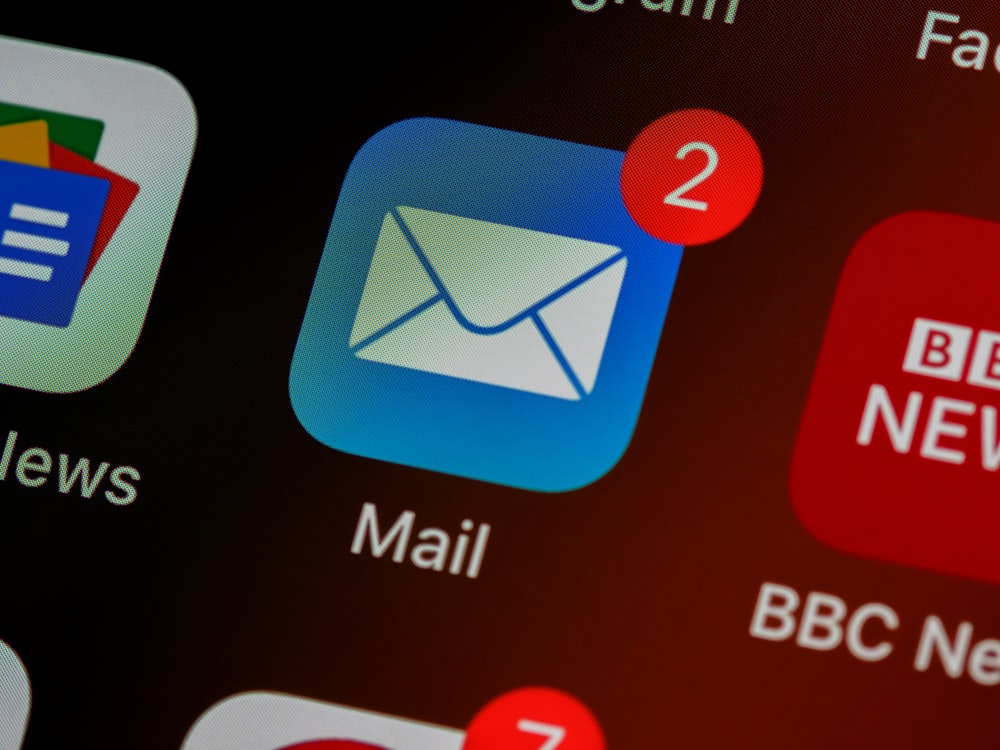Crafting Subject Lines That Get Your Cold Emails Opened
In the vast ocean of emails flooding the average professional’s inbox—a staggering 121 business emails per day according to recent studies—your cold email’s subject line serves as the critical first impression that determines whether your message gets opened or ignored. No matter how compelling your offer or how perfectly crafted your email body, if your subject line fails to capture attention, your efforts are wasted.

The perfect subject line creates curiosity while establishing relevance, offers clear value, and maintains authenticity. It should be brief (under 50 characters), personalized when possible, and specifically crafted for your target audience.
The Psychology Behind High-Performing Subject Lines
Understanding the psychological triggers that prompt someone to open an email is fundamental to crafting subject lines that consistently perform well. Several key psychological principles come into play:
Curiosity Gap
The human brain is naturally drawn to resolve information gaps. When we sense there’s something we don’t know but want to know, we experience cognitive tension that can only be relieved by obtaining the missing information. Subject lines that hint at valuable information without fully revealing it leverage this principle effectively.
Examples:
- “What [Competitor] isn’t telling you about their pricing”
- “The overlooked strategy behind [Company]’s recent success”
- “3 surprising findings from our [Industry] research”
Personal Relevance
We’re more likely to pay attention to information that appears specifically relevant to our situation, challenges, or interests. Personalizing subject lines to reflect the recipient’s industry, role, company, or recent developments signals that the email contains information worth their attention.
Examples:
- “[Company name]: Quick question about your expansion plans”
- “New approach to the [specific challenge] you mentioned in your talk”
- “Resource for [specific team/department] at [Company]”
When referencing the recipient's company in a subject line, double-check the spelling and proper capitalization. A misspelled company name signals that your "personalized" email is actually mass-produced.
Value Proposition
Humans make split-second decisions based on perceived value versus effort. Subject lines that clearly convey the value contained within the email—how it might save time, increase revenue, solve a problem, or provide useful information—are more likely to be opened.
Examples:
- “10-minute solution to your [specific challenge]”
- “Case study: How [similar company] increased [relevant metric] by 37%”
- “Template for streamlining your [specific process]”
Fear of Missing Out (FOMO)
The anxiety that we might miss valuable opportunities or information can be a powerful motivator. Subject lines that imply time sensitivity or exclusivity tap into this psychological trigger.
Examples:
- “Last chance: [Opportunity] closes Friday”
- “Private invitation: [Exclusive event/resource] for [Company] leaders”
- “[First name], you’re missing our highest-rated [resource/event]”

Formulas for Subject Lines That Consistently Perform
While the psychology provides the foundation, these practical formulas offer templates you can adapt to create subject lines with consistently high open rates:
"Is [common industry practice] holding your team back?"
"How to [achieve desirable outcome] without [common pain point]"
"5 [industry] trends reshaping [specific function] in 2024"
"My thoughts on [Company]'s recent [announcement/change/launch]"
1. The Question Formula
Questions naturally prompt the brain to engage and formulate an answer, increasing the likelihood of an open. The most effective questions are those that the recipient can’t immediately answer but would benefit from knowing.
Examples:
- “Is [common industry practice] holding your team back?”
- “Are you making these 3 [specific area] mistakes?”
- “[First name], would [specific result] help your Q3 objectives?”
2. The How-To Formula
This formula signals practical, actionable information that can be immediately applied, appealing to the recipient’s desire for valuable resources.
Examples:
- “How to [achieve desirable outcome] without [common pain point]”
- “How [competitor/similar company] achieved [impressive result]”
- “How we helped [similar company] solve [specific challenge]”
3. The List Formula
List-based subject lines work because they promise easily digestible information and set clear expectations about the email’s content.
Examples:
- “5 [industry] trends reshaping [specific function] in 2024”
- “3 questions to ask before investing in [solution/product/strategy]”
- “7 ways to improve your [relevant metric] this quarter”
4. The Personalized Insight Formula
This formula suggests you have information specifically relevant to the recipient’s company or situation, piquing curiosity through relevance.
Examples:
- “My thoughts on [Company]’s recent [announcement/change/launch]”
- “Observation about your [specific company element]”
- “[First name], analyzed your [website/product/service] and noticed this”
5. The Name-Drop Formula
Leveraging mutual connections or recognized entities enhances credibility and increases open rates significantly.
Examples:
- “[Mutual connection] suggested I reach out about [topic]”
- “Following up on your conversation with [colleague/partner]”
- “Like [similar company], you might benefit from [value proposition]”

6. The Direct Value Formula
Clearly stating what the recipient stands to gain creates immediate interest, especially when the benefit addresses a known pain point.
Examples:
- “Quick tip to improve your [specific metric/process]”
- “[X]% increase in [desirable outcome]: Case study for [First name]”
- “Solving [specific challenge] for [Company name]”
7. The Curiosity-Gap Formula
Creating a sense that the recipient is missing valuable information can be particularly effective when done subtly and authentically.
Examples:
- “What we’re seeing in [industry] (not what you’d expect)”
- “The overlooked factor in [relevant process]”
- “Your competitors are adopting this [strategy/tool/approach]”
Top-performing subject lines in cold emails typically achieve 35-50% open rates compared to the industry average of 15-25%. The most successful versions often combine multiple formula elements—for example, using both personalization and a question format.
Testing Framework: How to Find What Works for Your Specific Audience
While these formulas provide strong starting points, the most effective subject lines will vary depending on your specific audience, offering, and context. A systematic testing approach is essential:
Establish Baseline Metrics
Before you can improve, you need to know your current performance. Track these key metrics for your cold email campaigns:
- Open rate: Percentage of recipients who open your email
- Click-through rate: Percentage who click links within your email
- Response rate: Percentage who reply to your email
- Conversion rate: Percentage who take your desired action
Implement A/B Testing
Systematically test different subject line approaches by:
- Creating two variations that differ in only one element (e.g., length, personalization, tone)
- Sending each version to a statistically significant sample of your target audience
- Measuring which version performs better
- Implementing the winning approach in future campaigns
- Continuously testing new variations against your current best performer
For statistical significance, each subject line variant should be tested with at least 200 recipients. Also, ensure you're testing at the same time of day and day of the week to eliminate timing variables.
Variables Worth Testing
Beyond the basic formulas, consider testing these specific variables:
Length
Research shows that subject lines between 6-10 words typically perform best, but this varies by industry and audience. Test shorter versus longer subject lines with your specific recipients.
Personalization Elements
Test different types of personalization:
- Company name
- Recipient’s first name
- Reference to recipient’s role
- Mention of recent company news
- Industry-specific terminology
Tone and Style
Different audiences respond to different tones:
- Formal versus conversational
- Direct versus intriguing
- Problem-focused versus opportunity-focused
- Technical versus accessible
Special Characters and Formatting
Test the impact of:
- Using numbers (especially odd numbers, which tend to perform better)
- Including emojis (works well in some industries, poorly in others)
- Incorporating brackets or parentheses
- Using all lowercase versus standard capitalization

Common Subject Line Mistakes and How to Avoid Them
Even with solid formulas, these common pitfalls can significantly reduce open rates:
1. Misleading or Clickbait Subject Lines
While it might boost your initial open rate, misleading subject lines destroy trust and damage your sender reputation. They also violate regulations like CAN-SPAM.
Instead: Ensure your subject line accurately represents your email’s content while still being compelling.
2. Generic or Vague Phrases
Subject lines like “Following up” or “Quick question” fail to provide any value proposition or reason to open.
Instead: Be specific about the value or information contained in your email, even when keeping it brief.
3. All Caps or Excessive Punctuation
“DON’T MISS THIS OPPORTUNITY!!!” immediately signals spam to both recipients and email filters.
Instead: Use emphasis strategically and sparingly. A single exclamation point or capitalization of one key word can work, but restraint is critical.
4. Lengthy Subject Lines
Mobile devices—where up to 60% of emails are now opened—display only 25-30 characters of subject lines, making lengthy ones particularly ineffective.
Instead: Front-load your subject line with the most compelling information, keeping the total length under 50 characters when possible.
"URGENT: DON'T MISS THIS LIMITED TIME OFFER!!!"
"Last day: Early access pricing for [Company] teams"
"Just following up"
"Additional insights on [specific topic] we discussed"
5. Failing to Segment and Personalize
Sending the same subject line to your entire prospect list ignores the varying interests, challenges, and priorities of different segments.
Instead: Develop subject line variations tailored to different industries, roles, company sizes, or stages in the buying journey.
6. Trigger Words That Flag Spam Filters
Certain words and phrases are more likely to trigger spam filters, including:
- “Free”
- “Guaranteed”
- “No risk”
- “This is not spam”
- Excessive use of $ symbols
Instead: Focus on value-driven language that addresses specific business outcomes rather than promotional language.
Subject Line Optimization for Different Industries
What works in one industry may fail in another. Here are tailored approaches for different sectors:
Technology and SaaS
Tech audiences often respond well to subject lines that:
- Reference specific metrics and ROI
- Mention integration with tools they already use
- Address technical pain points directly
- Use industry terminology to establish credibility
Example: “Reducing deployment time by 47% through [specific approach]”
Professional Services
Decision-makers in consulting, legal, financial, and other professional services industries typically respond to:
- Subject lines emphasizing efficiency and time savings
- References to compliance and risk reduction
- Mentions of peer firms or industry standards
- Opportunity for competitive advantage
Example: “How [similar firm] streamlined client onboarding (compliance case study)”
Manufacturing and Industrial
This sector often favors subject lines that:
- Focus on practical, tangible benefits
- Address operational efficiency
- Mention cost reduction and ROI
- Reference relevant certifications or standards
Example: “Cutting production downtime: [Company name] implementation results”
Healthcare
Healthcare professionals respond best to subject lines that:
- Emphasize patient outcomes and care quality
- Address regulatory compliance
- Reference evidence-based approaches
- Mention time savings for clinical staff
Example: “Case study: Reducing readmissions while improving staff workflow”
Retail and E-commerce
Retail decision-makers are typically drawn to subject lines that:
- Address customer experience improvements
- Mention sales lift or conversion rate increases
- Reference seasonal or trend-related opportunities
- Focus on competitive differentiation
Example: “3 personalization strategies boosting AOV by 23% for specialty retailers”
Study high-performing subject lines specifically in your target industry. What works for healthcare will likely underperform in tech, and what resonates with manufacturers may fall flat with retailers.
The Mobile Optimization Factor
With the majority of emails now opened on mobile devices, optimizing subject lines for small screens is essential:
Character Limits
Different devices display different numbers of characters:
- iPhone mail app in portrait mode: ~35-40 characters
- Gmail app on Android: ~40-45 characters
- Samsung email app: ~33 characters
To ensure your key message is visible, position the most important information in the first 30 characters.
Preview Text Optimization
The preview text (snippet of body text visible in the inbox) works in conjunction with your subject line. Craft these elements to complement each other, with the preview text expanding on the subject line’s promise rather than redundantly restating it.
Avoid Technical Rendering Issues
Some special characters don’t render properly on all mobile devices, potentially replacing your carefully crafted subject line with problematic characters. Test your subject lines across multiple devices before deploying them widely.

Timing: When Subject Line Style Should Change
Different situations call for different subject line approaches:
Initial Outreach
For your first contact, subject lines should focus on establishing relevance and value without presuming a relationship.
Example: “Research on [Company]’s [specific challenge]: 3 observations”
Follow-up After No Response
Follow-up subject lines should reference the previous outreach while adding new value or a different angle.
Example: “Additional thoughts on [previously mentioned topic]”
Follow-up After Initial Engagement
Once a prospect has opened or responded to a previous email, subject lines can become more direct and familiar.
Example: “Next steps on our [topic] discussion, [First name]”
Re-engagement After Extended Silence
When attempting to revive a cold conversation, subject lines should acknowledge the gap while providing a compelling reason to re-engage.
Example: “Worth revisiting: [specific value proposition] for [Company]”
When following up on an unopened email, don't use the standard "Re:" prefix artificially. Instead, create a completely new subject line that approaches the value proposition from a different angle.
Measuring Success: Beyond Open Rates
While open rates are the most obvious metric for subject line success, these additional measurements provide deeper insight:
Reply Rate
A truly effective subject line doesn’t just get opens—it begins conversations. Track what percentage of opened emails receive replies.
Spam Complaint Rate
Monitor how often your emails are marked as spam. A spike in complaints often indicates that your subject lines are creating expectations that your email content isn’t meeting.
Open-to-Meeting Conversion
Track which subject line approaches are most effective at not just generating opens but leading to actual meetings or sales conversations.
Unsubscribe Rate
A high unsubscribe rate following opens may indicate that while your subject line is compelling, the content doesn’t deliver on its promise.
Conclusion: The Ongoing Evolution of Effective Subject Lines
The art and science of crafting compelling subject lines continues to evolve as inbox volumes increase, attention spans decrease, and email clients and devices change. What worked last year may not work as well today, making ongoing testing and optimization essential.
The most successful cold emailers maintain libraries of their highest-performing subject lines and continuously test new approaches against these champions. They also stay attuned to shifts in their target audience’s behavior and preferences, adapting their approach accordingly.
By applying the formulas and principles outlined in this guide, systematically testing variations, and carefully measuring results beyond simple open rates, you can develop subject lines that consistently achieve 50%+ open rates—turning the often-ignored cold email into a powerful tool for starting meaningful business conversations.



